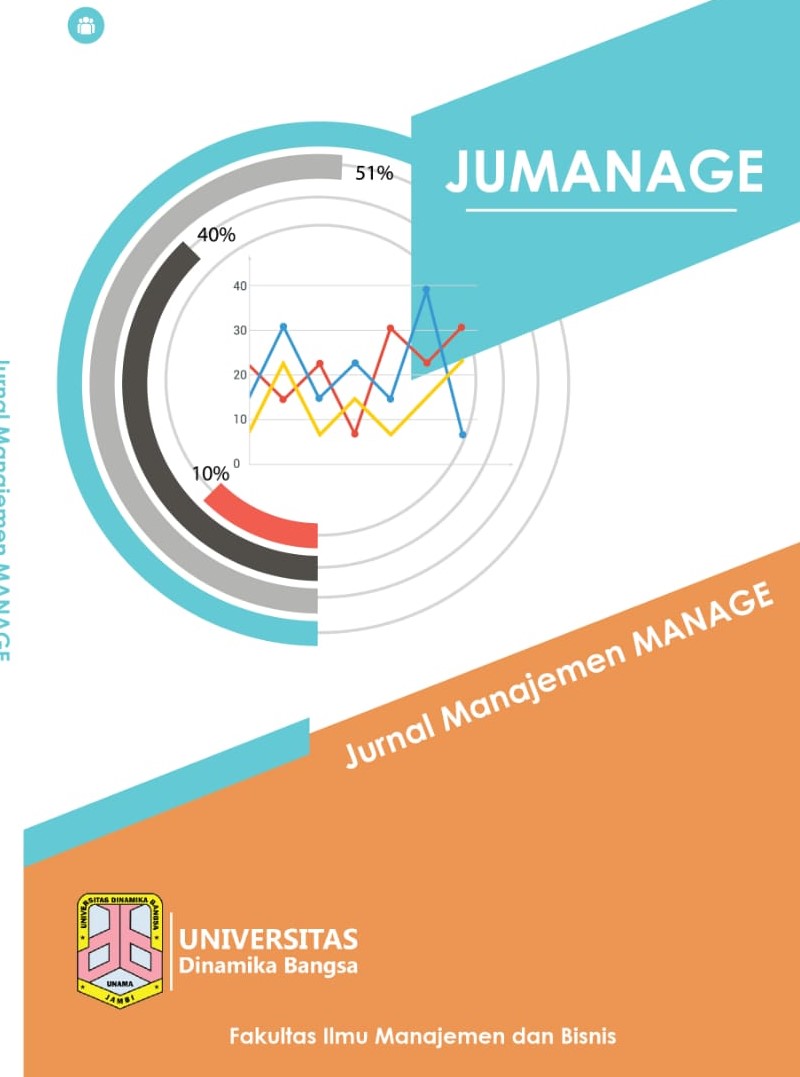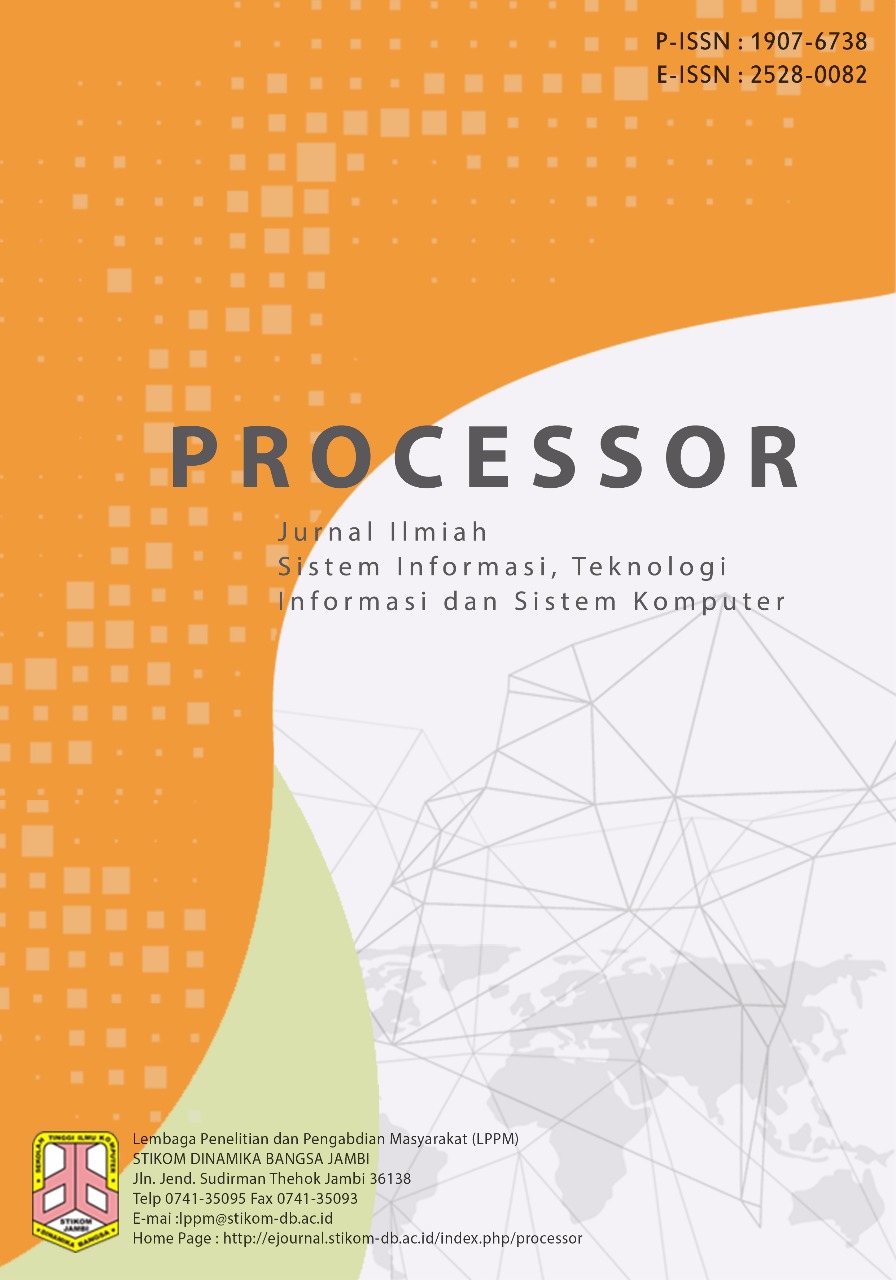Analisis Sistematis Penelitian Literasi Keuangan
DOI:
https://doi.org/10.33998/jumanage.2022.1.1.28Kata Kunci:
Literasi Keuangan, Teknik Bibliometrik, Network Analysis, Analisa Sistematis, FintechAbstrak
Penelitian ini bertujuan untuk menganalisis artikel ilmiah untuk memetakan penelitian literasi keuangan secara internasional, baik itu secara tema, lokasi dan subjek penelitian dan metode penelitian yang digunakan. Penelitian ini meneliti 40 artikel ilmiah dan mendeskripsikan empat temuan utama. Pertama. Tema pertama dalam penelitian literasi keuangan yaitu berkaitan dengan perilaku masyarakat pada investasi dan keputusan dalam berwirausaha dan tema kedua berkaitan dengan fintech. Kedua, kuesioner merupakan metode pengumpulan data yang paling mendominasi. Ketiga, penelitian literasi keuangan baik itu di negeri bekembang ataupn negara maju, mempunyai jumlah penelitian yang hamper setara. Keempat, berdasarkan Social Network Analysis (SNA) teknik bibliometrik dengan menggunakan Vosviewer, penelitian digitalisasi UMK terbagi menjadi tiga klaster, Penelitian ini menyarankan agenda penelitian selanjutnya untuk mengelaborasikan aspek teori dan metodologi dengan menguji tiga tema tersebut. Dengan mengeskplorasi tiga tema tersebut, akan berkontribusi lebih lanjut pada konstruk penelitian literasi keuangan kedepannya
Kata Kunci: Literasi keuangan, teknik bibliometrik, network analysis, analisa sistematis, fintech.
Unduhan
Referensi
Abad-Segura, E., & González-Zamar, M. D. (2019). Effects of financial education and financial literacy on creative entrepreneurship: A worldwide research. Education Sciences, 9(3). https://doi.org/10.3390/educsci9030238
Amagir, A., Groot, W., Maassen van den Brink, H., & Wilschut, A. (2018a). A review of financial-literacy education programs for children and adolescents. Citizenship, Social and Economics Education, 17(1), 56–80. https://doi.org/10.1177/2047173417719555
Amagir, A., Groot, W., Maassen van den Brink, H., & Wilschut, A. (2018b). A review of financial-literacy education programs for children and adolescents. Citizenship, Social and Economics Education, 17(1), 56–80. https://doi.org/10.1177/2047173417719555
Anderson, B. B. (2015). Entrepreneurship Development and Financial Literacy in Africa. World Journal of Entrepreneurship, Management and Sustainable Development, 11(1), 64–70.
Baker, H. K., Kumar, S., Goyal, N., & Gaur, V. (2019). How financial literacy and demographic variables relate to behavioral biases. Managerial Finance, 45(1), 124–146. https://doi.org/10.1108/MF-01-2018-0003
Baporikar, N., & Akino, S. (2020a). Financial Literacy Imperative for Success of Women Entrepreneurship. International Journal of Innovation in the Digital Economy, 11(3), 1–21. https://doi.org/10.4018/ijide.2020070101
Baporikar, N., & Akino, S. (2020b). Financial Literacy Imperative for Success of Women Entrepreneurship. International Journal of Innovation in the Digital Economy, 11(3), 1–21. https://doi.org/10.4018/ijide.2020070101
Damayanti, L. E., Susilaningsih, & Indriayu, M. (2020). Financial literacy in student financial management behavior in the digital age. PervasiveHealth: Pervasive Computing Technologies for Healthcare, 20–23. https://doi.org/10.1145/3452144.3453759
Drexler, A., & Fischer, G. (2010). Keeping it Simple: Financial Literacy and Rules of Thumb. CEPR Discussion Papers, 6(2), 1–31. http://personal.lse.ac.uk/fischerg/Assets/Drexler Fischer Schoar - Keep it Simple.pdf%5Cnfile://localhost/Users/Jon/Dropbox/Papers/2010/Drexler/2010 Drexler Keeping it Simple Financial Literacy.pdf%5Cnpapers://223ceb43-ea0d-438b-b5df-df263cee6756/Paper/p6
Indarti, N., Lukito-budi, A. S., & Islam, A. M. (2020). A systematic review of halal supply chain research : to where shall we go ? Journal of Islamic Marketing, December. https://doi.org/10.1108/JIMA-05-2020-0161
Kulathunga, K. M. M. C. B., Ye, J., Sharma, S., & Weerathunga, P. R. (2020). How does technological and financial literacy influence SME performance: Mediating role of ERM practices. Information (Switzerland), 11(6). https://doi.org/10.3390/INFO11060297
Lubis, A., Dalimunthe, R., & Situmeang, C. (2019). Antecedents Effect of Financial Inclusion for the People of North Sumatera. Budapest International Research and Critics Institute (BIRCI-Journal) : Humanities and Social Sciences, 2(4), 401–408. https://doi.org/10.33258/birci.v2i4.602
Lusardi, A., & Mitchell, O. S. (2014). The economic importance of financial literacy: Theory and evidence. Journal of Economic Literature, 52(1), 5–44. https://doi.org/10.1257/jel.52.1.5
Lusardi, A., & Oggero, N. (2017). Millennials and financial literacy: A global perspective. Global Financial Literacy Excellence Center, 5, 17. http://gflec.org/wp-content/uploads/2017/07/Millennials-and-Financial-Literacy-Research-Paper.pdf?x87657
Morgan, P., Huang, B., & Trinh, L. (2020). The Need to Promote Digital Financial Literacy for the Digital Age Bihong Huang ( Asian Development Bank Institute ). June 2019, 1–9.
Nedungadi, P. P., Menon, R., Gutjahr, G., Erickson, L., & Raman, R. (2018). Towards an inclusive digital literacy framework for digital India. Education and Training, 60(6), 516–528. https://doi.org/10.1108/ET-03-2018-0061
Sabri, M. F., & Aw, E. C. X. (2019). Financial literacy and related outcomes: The role of financial information sources. International Journal of Business and Society, 20(1), 286–298.
Thomson, S. (2020). Equity issues in student financial literacy.
Wahyuni, H., & Vanany, I. (2019). Food Safety and Halal Food in the Supply Chain : Review and Bibliometric Analysis. 12(2), 373–391.
https://www.ojk.go.id/id/kanal/edukasi-dan-perlindungan-konsumen/Pages/literasi-keuangan.aspx diakses 30 Desember 2021.















